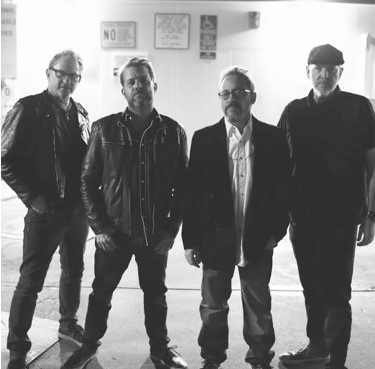Happy Wednesday and welcome to another installment of my midweek feature, in which I take a closer look at songs I’ve only mentioned in passing or not covered at all to date. Today’s pick resulted from an online chat in early March with fellow blogger Matthew, aka as The Observation Blogger in the wake of his post about Leonard Cohen’s I Can’t Forget. Check out his blog when you have a chance!
The aforementioned interaction prompted me to write about a song I loved from the very first moment I heard it: First We Take Manhattan, as covered by Jennifer Warnes.
Of course, Leonard Cohen connoisseurs know the Canadian singer-songwriter, poet and novelist penned this gem. But it was Jennifer Warnes who first recorded it for her stunning sixth studio album Famous Blue Raincoat: The Songs of Leonard Cohen. The versatile American singer-songwriter is best known for collaborations with the likes of Joe Cocker, Bob Dylan and Cohen. She first worked with the Canadian artist in 1972 when she sang with Cohen on his Bird On the Wire European tour.
Sadly, Warnes’ fantastic rendition of First We Take Manhattan fell far short of the chart success of Up Where We Belong and (I’ve Had) The Time of My Life, her hugely popular 1982 and 1987 duets with Joe Cocker and Bill Medley, respectively. The single did best on the Canadian Hot Adult Contemporary Tracks where it peaked at no. 6. On the equivalent Billboard chart in the U.S. it climbed to no. 29. Cohen subsequently recorded the song for his February 1988 studio album I’m Your Man and also released it as a single. It missed the charts altogether!
In addition to Warnes’ compelling vocals, which stand in stark contrast to the bone-chilling lyrics that at least in part are about terrorism, I’ve always dug the amazing lead guitar work on this song. It was provided by none other than Stevie Ray Vaughan, one of my all-time favorite blues rock guitarists.
Roscoe Beck who together with Warnes co-produced Famous Blue Raincoat and also played bass was friends with Vaughan and asked the Texan to play guitar on the recording. Apparently, Vaughan showed up with no equipment and ended up using one of Beck’s old Fender Stratocasters. After working out some technical challenges, the guitar virtuoso finished recording his takes at 4:00 a.m.!
The song’s official video, directed by Paula Walker, was filmed in New York City. It features SVR playing his beat up “Number One” Stratocaster on the Brooklyn Bridge. Cohen appears in the video as well, together with Warnes.
First We Take Manhattan has also been covered by a number of other artists, most notably R.E.M. and Joe Cocker. SecondHandSongs counted 50 versions. Here’s Cocker’s rendition, which he included on his 17th studio album No Ordinary World, released in October 1999 in Europe, followed by the U.S. in August 2000.
Following are some additional insights from Songfacts:
If you’re a bit puzzled by this song, that might be the point. Cohen took a shot at explaining it in the April 1993 issue of Song Talk. The Canadian singer/ songwriter said: “I felt for sometime that the motivating energy, or the captivating energy, or the engrossing energy available to us today is the energy coming from the extremes. That’s why we have Malcolm X. And somehow it’s only these extremist positions that can compel our attention. And I find in my own mind that I have to resist these extremist positions when I find myself drifting into a mystical fascism in regards to myself. [Laughs]”
“So this song, ‘First We Take Manhattan,’ what is it? Is he serious? And who is we? And what is this constituency that he’s addressing? Well, it’s that constituency that shares this sense of titillation with extremist positions. I’d rather do that with an appetite for extremism than blow up a bus full of schoolchildren.”
Bassist and longtime Cohen associate Roscoe Beck produced the cut. He recalled to Uncut: “I was working on Jennifer Warnes’ record of Leonard’s songs, Famous Blue Raincoat, so I called him in Montreal to ask if he had any new material for it, and he played me, ‘First We Take Manhattan.’ I was stunned. Leonard had written on keyboards since the early ’80s, but this was a much more heavily synthesized, Eurodisco approach.”
“I was also taken aback by the lyrics,” he added. “They scared me. The singer’s character seemed mentally unstable, and I wondered what the song was about. Leonard says it’s someone who’s an outsider, demented and menacing. I had an eerie feeling about it.”
Leonard arranged his version in Montreal, and he and I finished it in LA,” Beck concluded. “He’d stacked female backing vocals that were quite a surprise. The song was such a departure from the folkiness of his past. It was a fresh start.”
The Jennifer Warnes version starts out with some spoken German radio about a Berlin disco in which some US servicemen were killed only a few months after they recorded the song. Beck commented: “It seemed prophetic of that, and 9/11 too.”
Sources: Wikipedia; Songfacts; Jennifer Warnes website; YouTube













